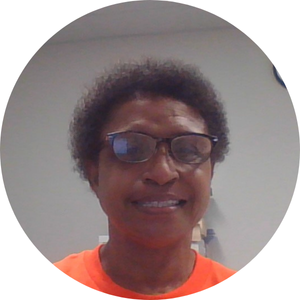

Dr. Beverly Yeadon
Collaborative learning is foundational for developing important lifelong valued skills that help students thrive in the future. Approaches such as portrait of a learner and portrait of a graduate emphasize collaborative skills as a central asset for students. Collaborative learning helps learners cultivate essential interpersonal skills like communication, regulation, and shared problem-solving, empowering them to engage meaningfully in the classroom, with their communities, and in future workplaces.
In this back-to-school season, we spoke to Dr. Beverly Yeadon, a transformation coach at Lake Marion Middle School in Orangeburg County School District to understand the importance of collaborative learning and how to successfully integrate it into classroom practice.
Dr. Yeadon: I genuinely appreciate how children grow because of the collaborative experience. As we prepare our students for the future with needed skills, we need to prepare them to work with others. They need social skills, work skills, and academic skills.
There aren’t many professions where a person works alone. I ask, what is a better place to teach how to work together than in the school system? I think that if we are truly going to be true to education for the future, we have to do this.
Dr. Yeadon: As a coach, it all begins with building trust. Teachers have to know that you have their best interests at heart, and that we—the coach and teacher—are partners in this mission to provide students with a quality education. Trust needs to be at the center. The teacher needs to know that I, the coach, will support them in whatever I bring to the table. And most importantly, we’re keeping in mind that it’s about the children; it’s about providing them with a high quality education.
Also, as a coach, you have to be flexible. I know that a teacher may not buy into everything that I bring and I’m willing to make adjustments when the need arises. Sometimes teachers are accustomed to traditional pedagogies and might resist change. However, building trust and demonstrating the value of collaborative pedagogies allow us to modify practices until they succeed.
Dr. Yeadon: A first concrete step is to share about the instructional practice, whether it’s collaborative learning or another strategy. I start with data to support why [the practice] is important. I bring research from other schools with similar demographics that have tried the practice. I may even bring in colleagues who use the practice to share about it, so I’m not just selling it, but really showing what this is and why this is a better practice.
I’m going to bring all that information [to the teacher], but not all at once. I will introduce the practice, and do a gradual release where we’ll start off small and then add steps. My goal is never to overwhelm a teacher. I connect the practice to what the teacher is already doing and show how to add a step or move.
Dr. Yeadon: Thorough preparation is very necessary. I am committed to laying out all the cards on the table so teachers understand that this is not a “wing it” situation—collaborative learning requires significant preparation time. It takes time to prepare [ourselves] and our students. Some children just like working by themselves and we need to help them learn to work together. I support my teachers so they can help students learn the skills they need and how to build a community of learners.
Dr. Yeadon: Collaborative learning teaches both content knowledge and essential skills for the future. Parents are often concerned about individual progress on content and it’s important to assure them that that individual learning happens within collaborative settings. Teachers can absolutely know what students know and what they still need to learn, even when in a collaborative learning setting. In fact, I have seen children learn much more in collaborative learning. At the core of my work is to support teachers as they prepare children by teaching the content, fostering communication and teamwork, and readying them for their adult lives.
Dr. Yeadon was a key contributor to the MC2 collaborative learning project. To learn more: